US election 2020: How do you become US president?
- Published

People in the US state of Iowa are about to start the process of finding a Democratic candidate to take on President Trump in the 2020 US presidential race.
This small agricultural state in the US Midwest is the first one to cast votes and will be followed by the other 49 and the US territories.
The winner that emerges will do battle for the White House in the presidential election in November.
So, how do you get the world's most powerful job?
Who gets to stand?
A president must be at least 35 years old, a "natural born US citizen" and a US resident for at least 14 years, according to the US Constitution - the country's founding charter.
Most candidates have a background in politics and have held an elected position, like senator, governor, vice-president, or member of Congress.
But they also occasionally come from the military, like former Army General Dwight Eisenhower, or the business world like Donald Trump, a former real estate developer and reality TV star.
Most modern candidates hold university degrees and over half the US presidents graduated in law.
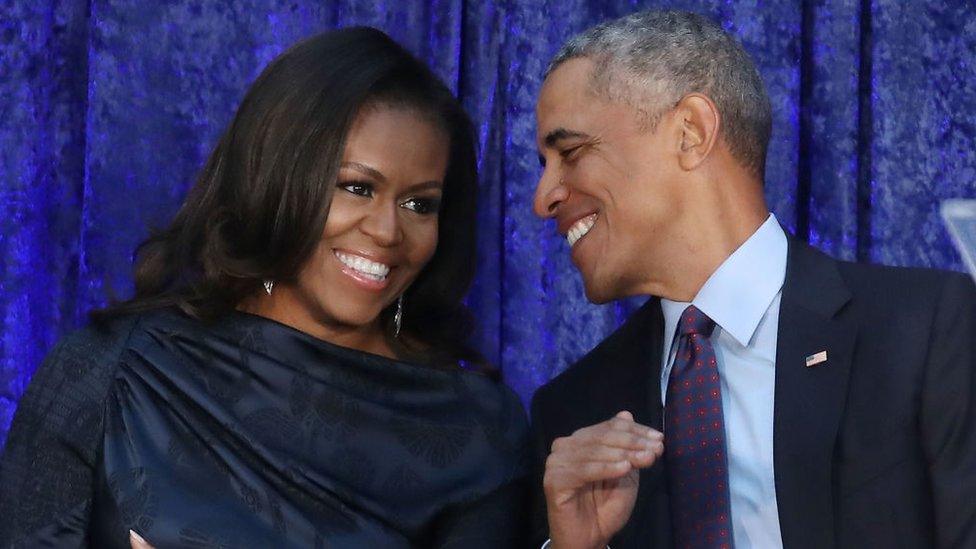
Barack and Michelle Obama met when they worked at the same law firm
The US has never elected a non-Christian president or a woman. And only one president, Barack Obama, has not been white.
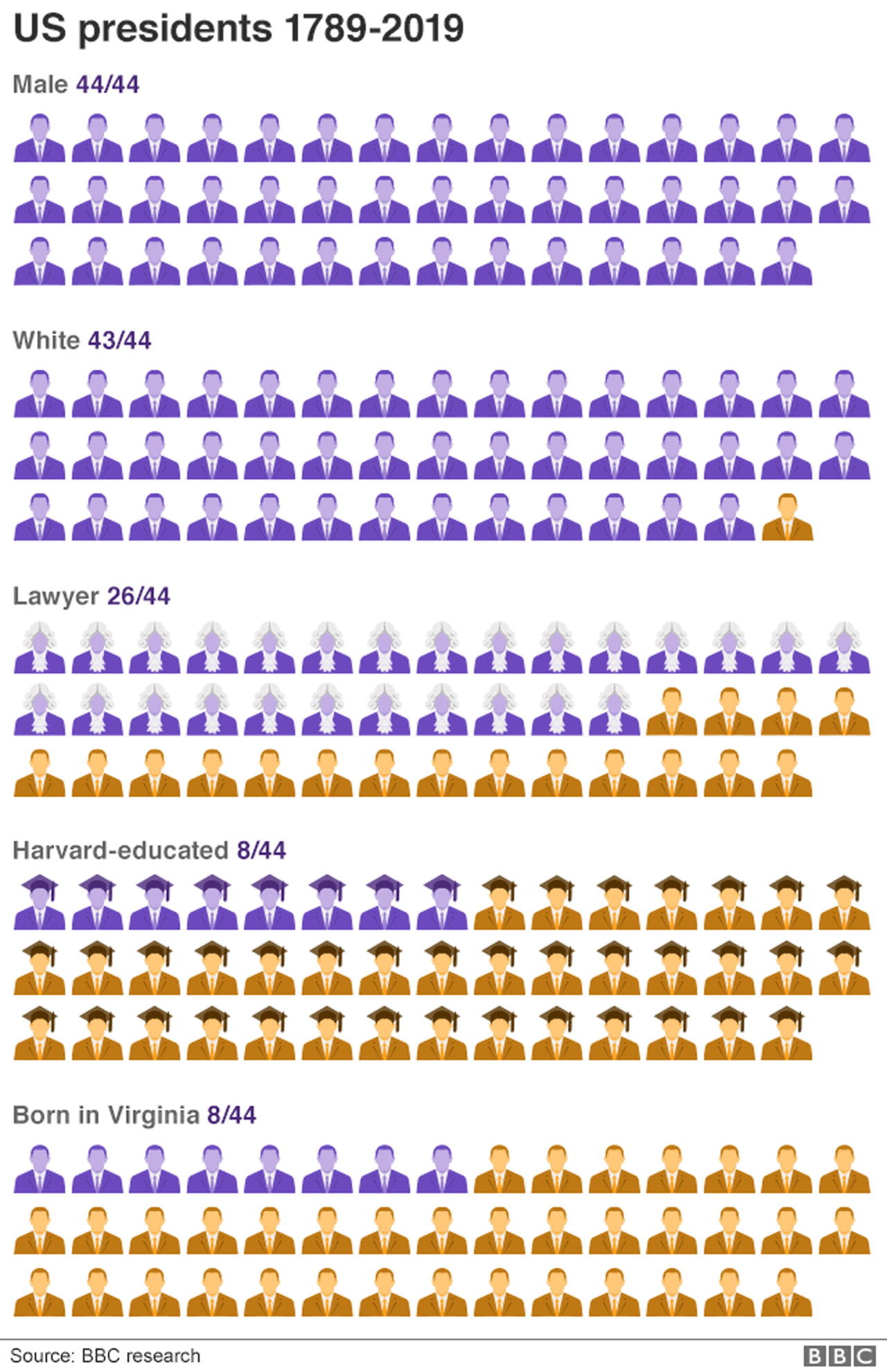

Donald Trump is considered the 45th president, although 44 men have occupied the post (Grover Cleveland served two non-consecutive terms).
How long do campaigns last?
Unlike some countries with legally defined campaign periods - like the UK and France - US candidates can campaign for as long as they wish. As such, presidential campaigns tend to last around 18 months.
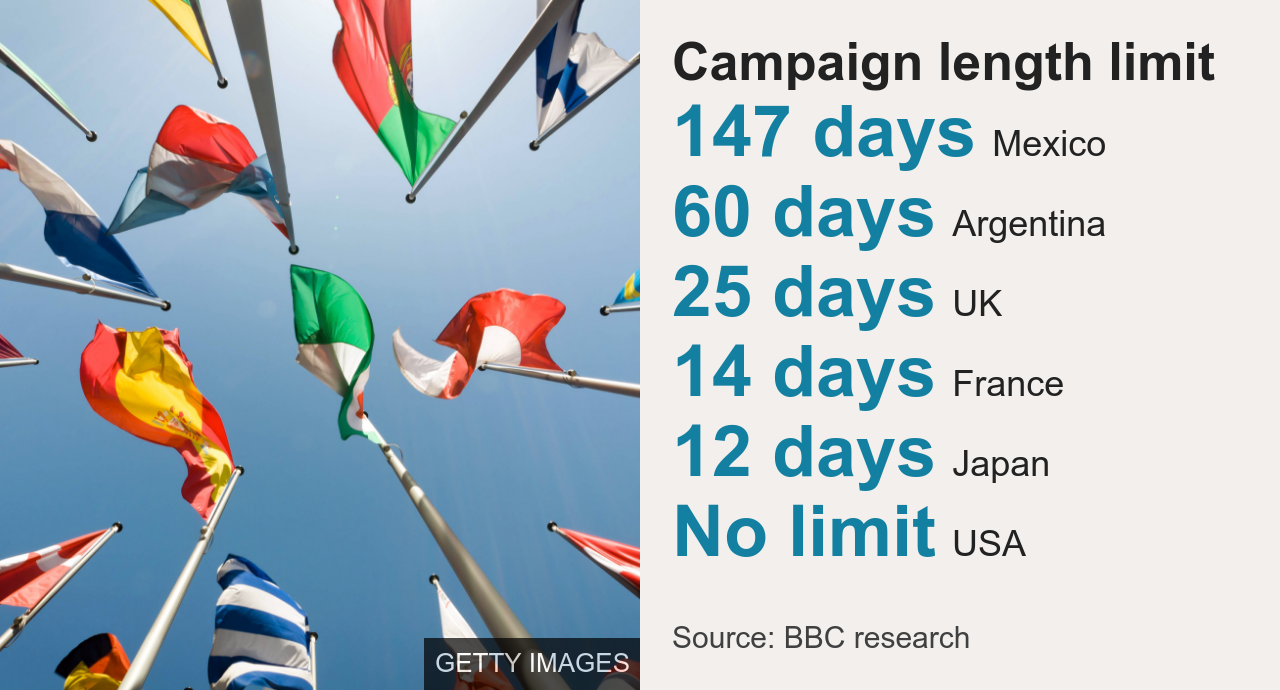

President Trump filed his re-election paperwork on the day he got the keys to the White House, in January 2017. He has held campaign-style "Make America Great Again" rallies ever since.
Becoming president - or even trying to be - can be eye-wateringly expensive. The ability to raise funds from your supporters, or spend your own cash, is of the utmost importance.
The Hillary Clinton v Donald Trump 2016 election cost a combined $2.4bn (£1.8bn) according to campaign finance watchdog OpenSecrets.org.
Donald Trump raised $46 million during the final three months of 2019 and has nearly $103 million on hand. That's far more than any of the Democratic candidates.
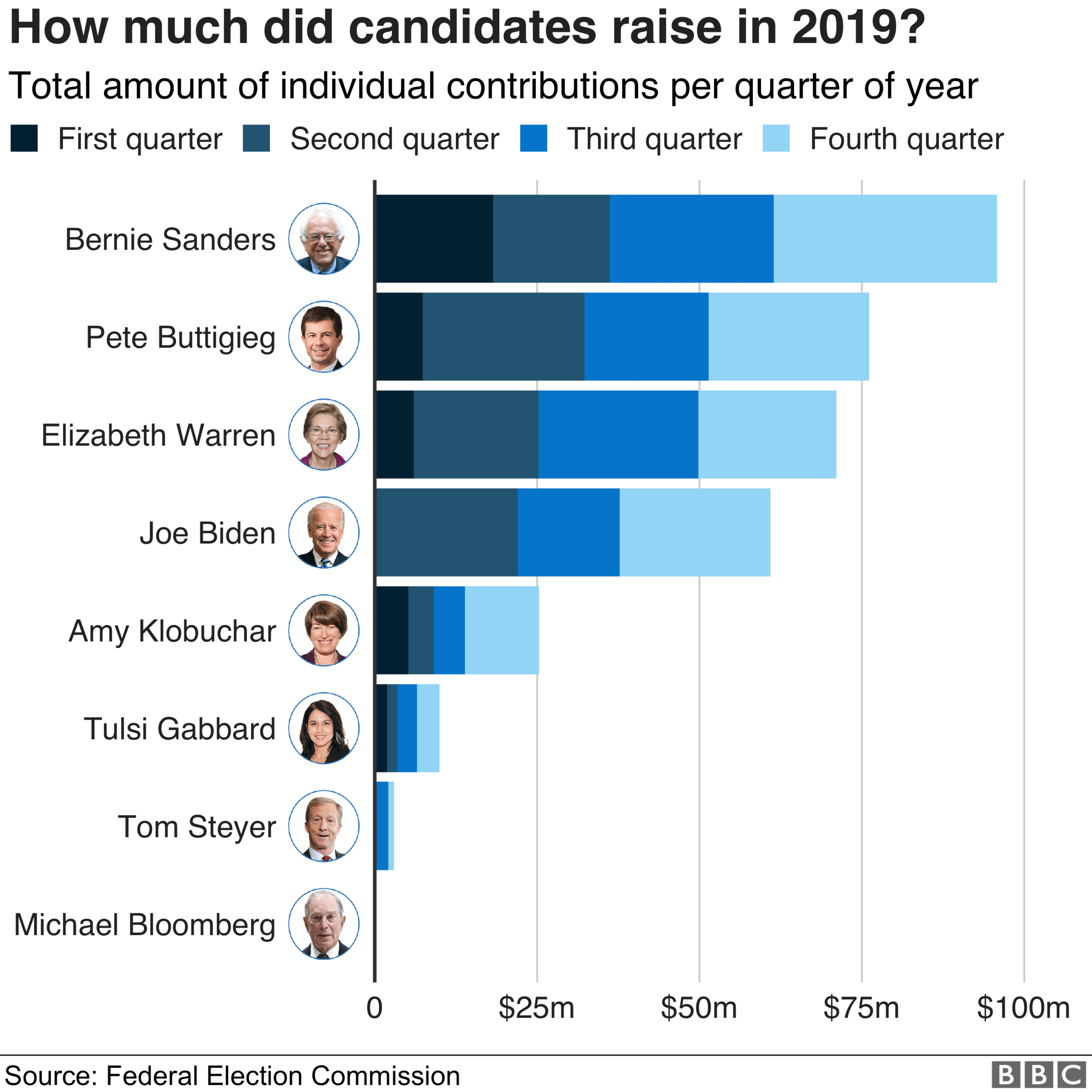

What are the main parties?
There are only two parties considered by most voters - the Democrats (the liberal party) and the Republicans (the right-wing party).
Confusingly, American commentators often refer to the Republican party by its nickname, the GOP, which is short for "Grand Old Party".
Other "third-party" candidates sometimes participate, with the Libertarian, Green and Independent parties occasionally putting forth a nominee.
Why are US election campaigns never-ending?
Who wants the job in 2020?
More than 20 Democrats were fighting for their party's nomination but more than half have dropped out.
So-called primary elections, which begin in February, are held by each state to decide which nominee is picked.
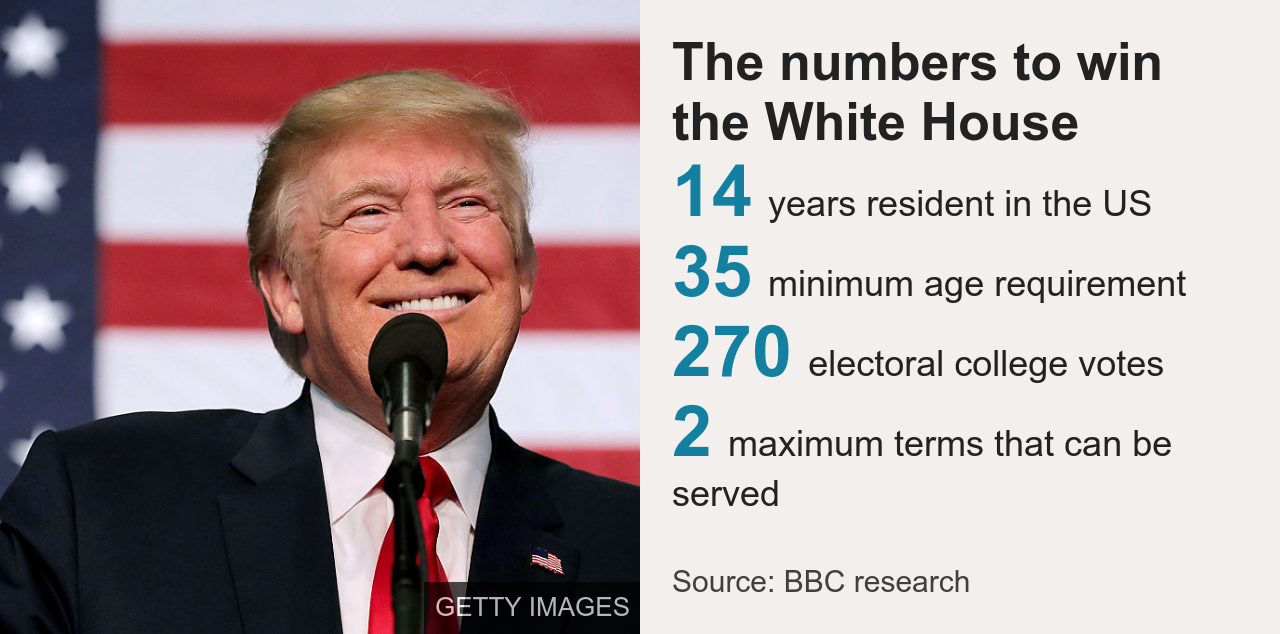

Frontrunners so far for the Democratic crown include Joe Biden (former vice-president), Bernie Sanders (Vermont senator) and Elizabeth Warren (Massachusetts senator).
Donald Trump is not the official Republican candidate until he is formally put forth by his party next summer.
He will have at least one challenger but he has little chance of beating Mr Trump, who is very popular in the party.
How do you win a general election?
The chosen Democrat and Republican candidates contest a general election in November 2020.
"The popular vote" - the sheer number of votes received by each candidate - will have nothing to do with determining the winner.
That comes down to the "electoral college" vote. A simple majority of 270 out of the 538 votes available wins the White House.
This makes some states very important to candidates. It is possible to win the popular vote, but lose the electoral vote, as happened to Democrats Al Gore in 2000 and Hillary Clinton in 2016.
Each state is worth a certain amount of "electors" - which is decided based on the size of the state's representation in Congress.
The six biggest states are California (55), Texas (38), New York (29), Florida (29), Illinois (20) and Pennsylvania (20).
Katty Kay explains the long and complex process for picking a presidential nominee
With California, New York, and Illinois solidly in the Democratic corner, and Texas a traditionally Republican stronghold - the presidential contest mostly takes place in only a handful of so-called "swing states", such as Ohio and Florida.
Swing states can change hands depending on the candidate. Arizona, Pennsylvania, and Wisconsin may be considered swing states in 2020.
Campaigns often choose not to send candidates or invest resources to states they consider unwinnable.
Republican bastions such as Idaho, Alaska, and many southern states are considered "red states" while Democrat-dominated states such as much of the New England region of the northeast coast are called "blue states".
Vote counting is handled by each state, and a winner is usually determined on the same night after the vote was held.
After a transition period, the new president takes over in January at an event called the inauguration. Following a ceremony at Congress, the president walks in a parade back to the White House to begin a four year term.

Who will take on Trump in 2020?

- Published10 July 2024
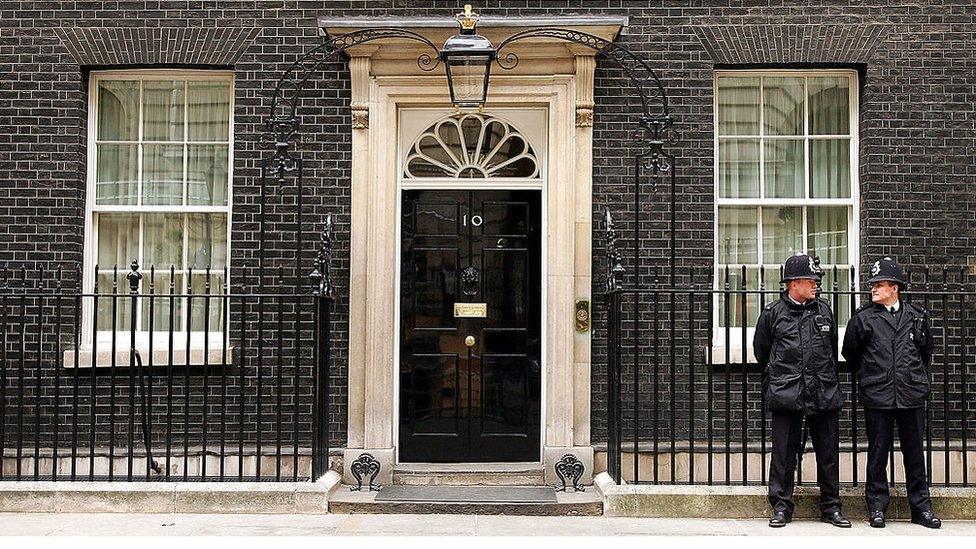
- Published20 June 2019
- Published18 July 2018
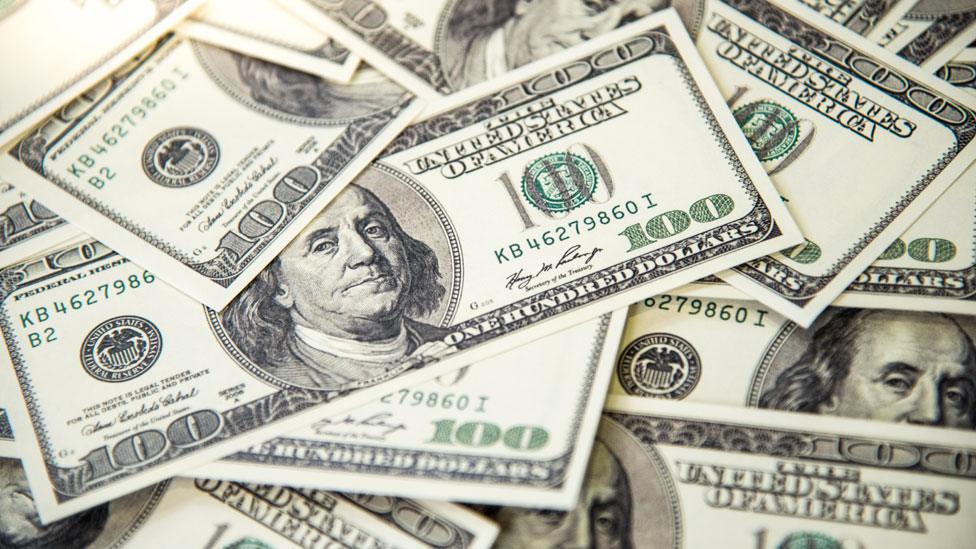
- Published25 August 2016
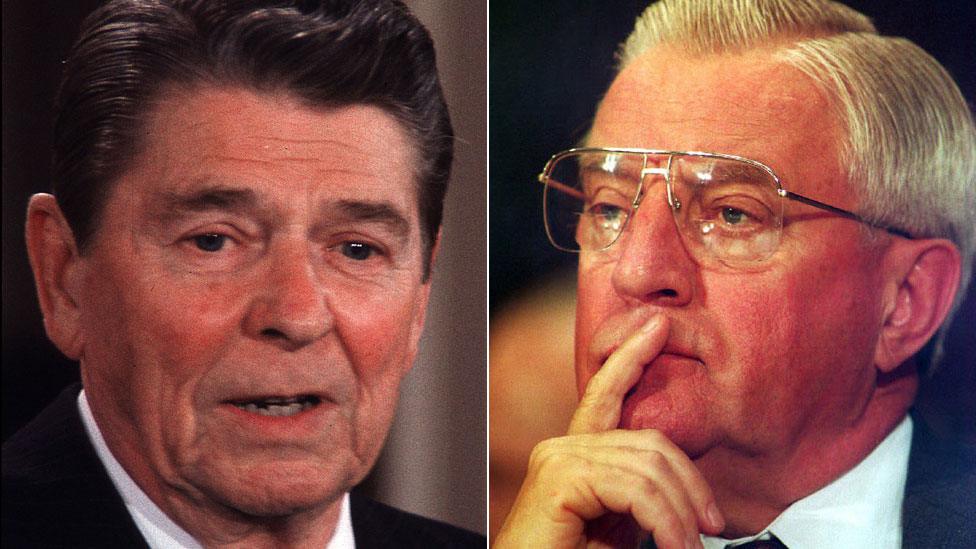
- Published28 January 2016
- Published20 January 2016
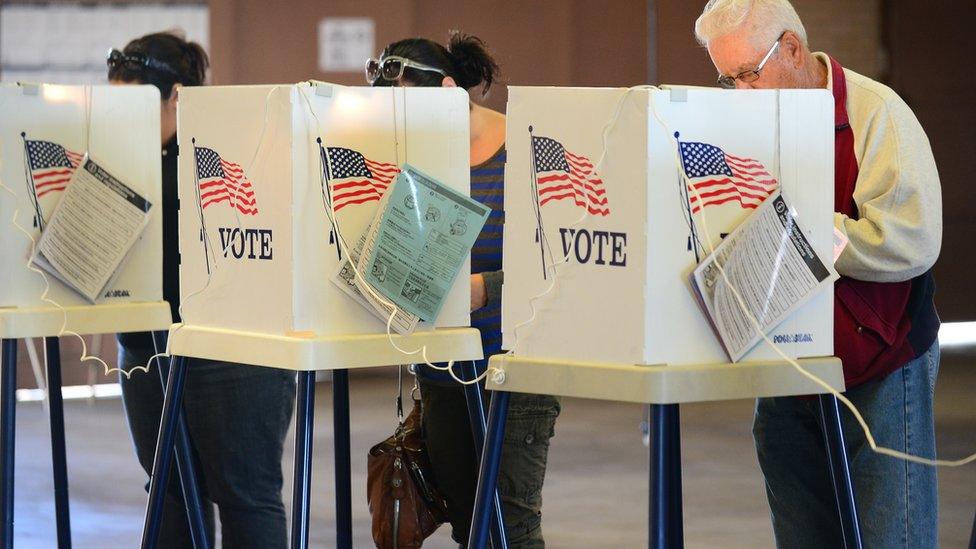
- Published5 March 2020
